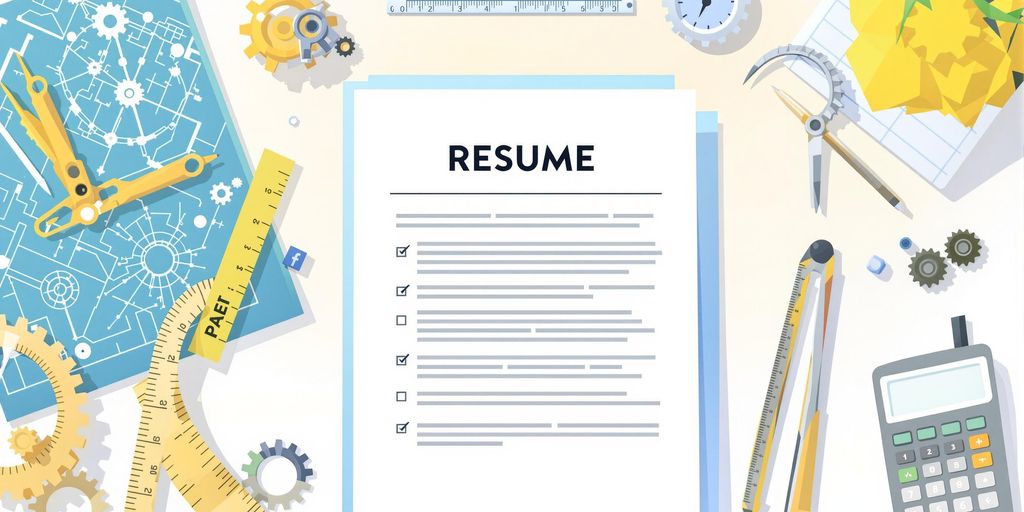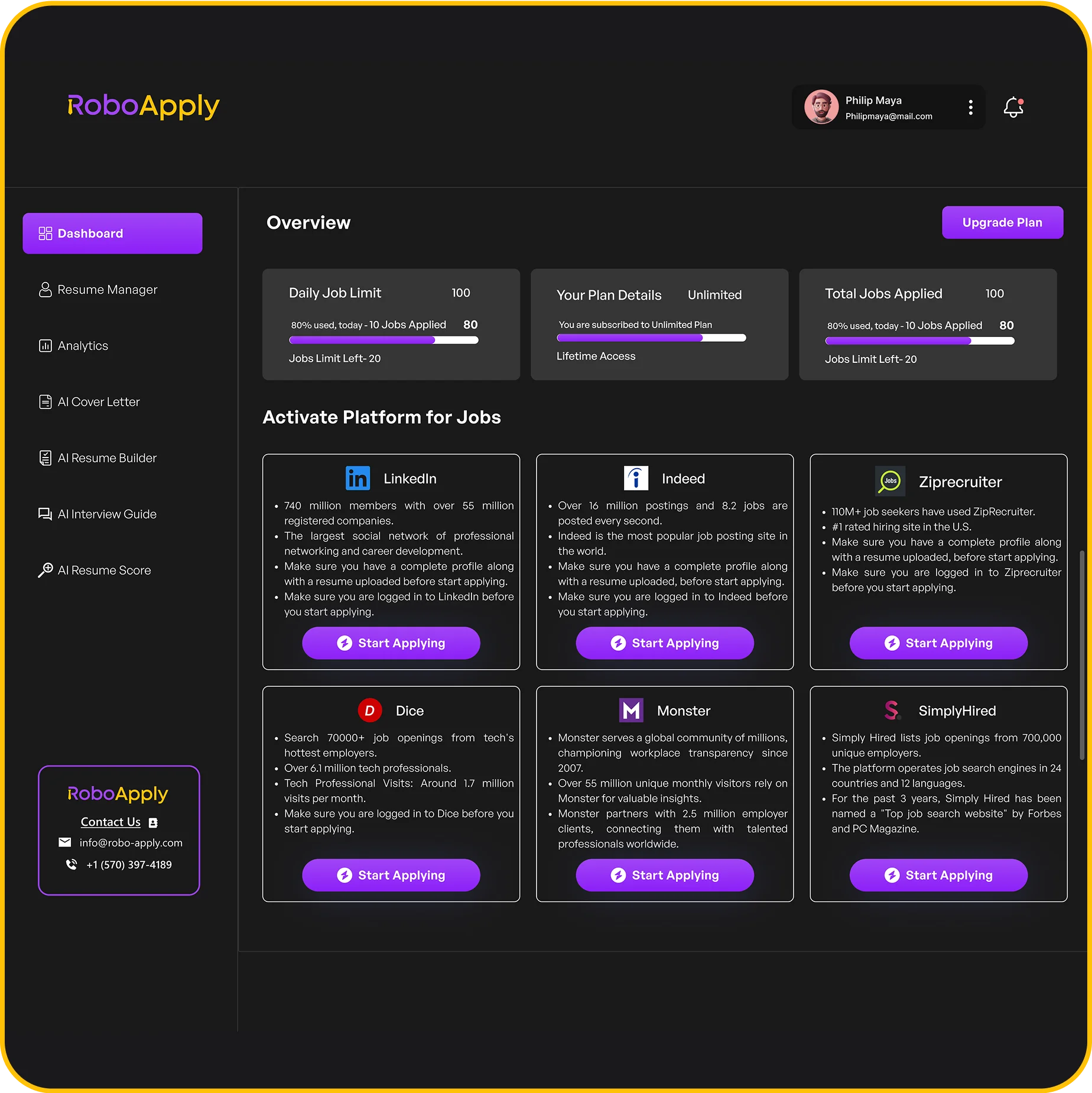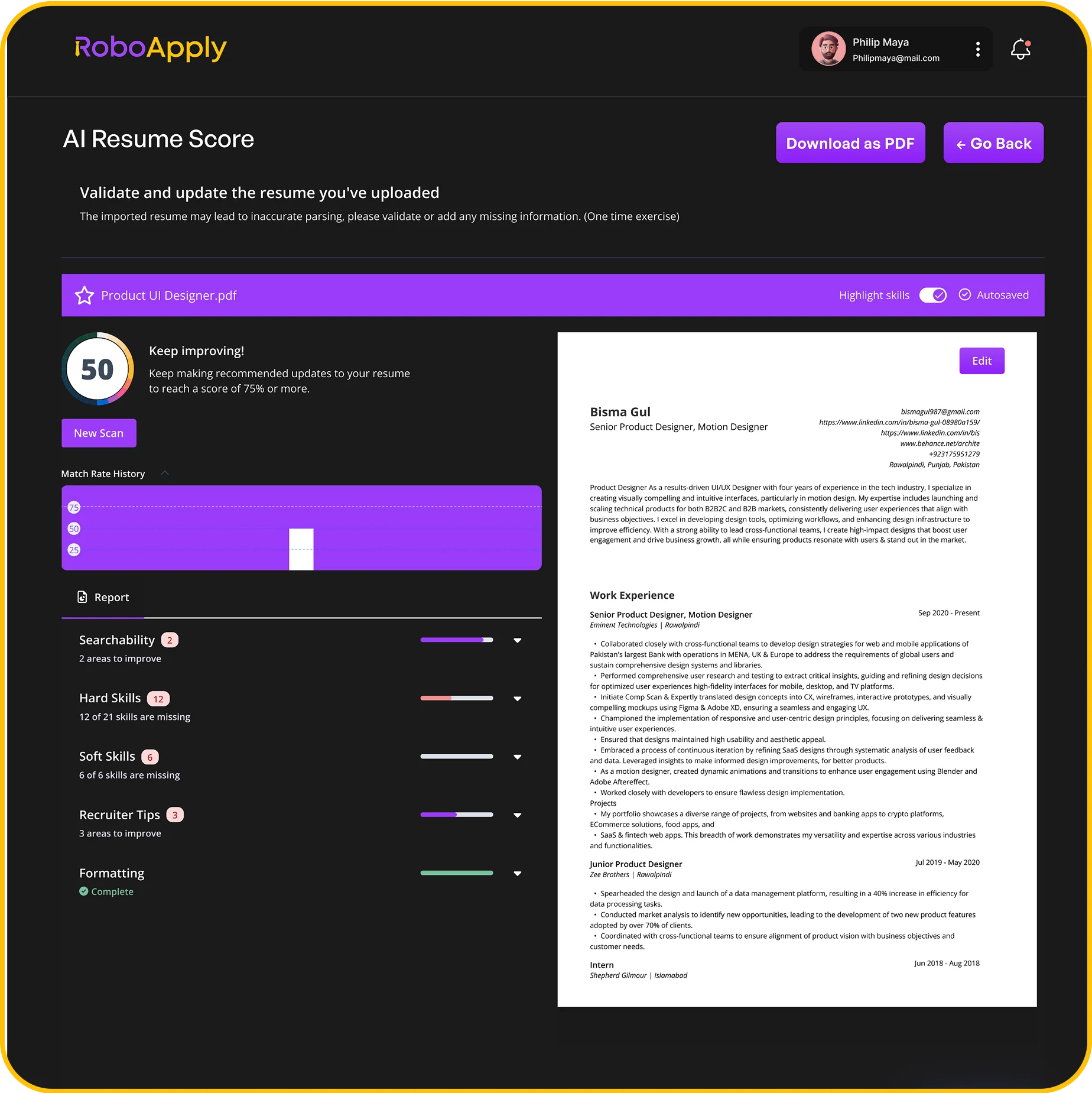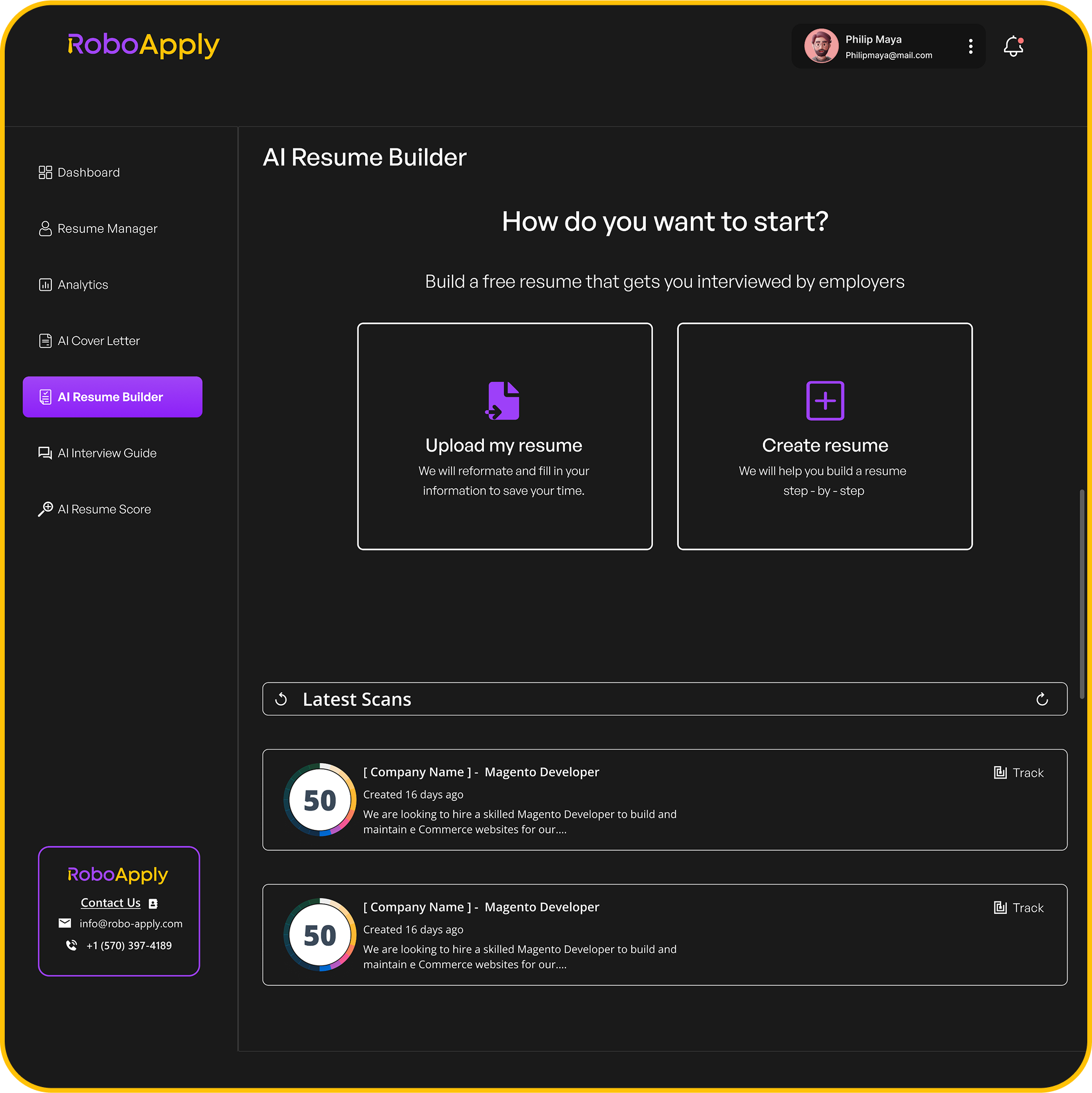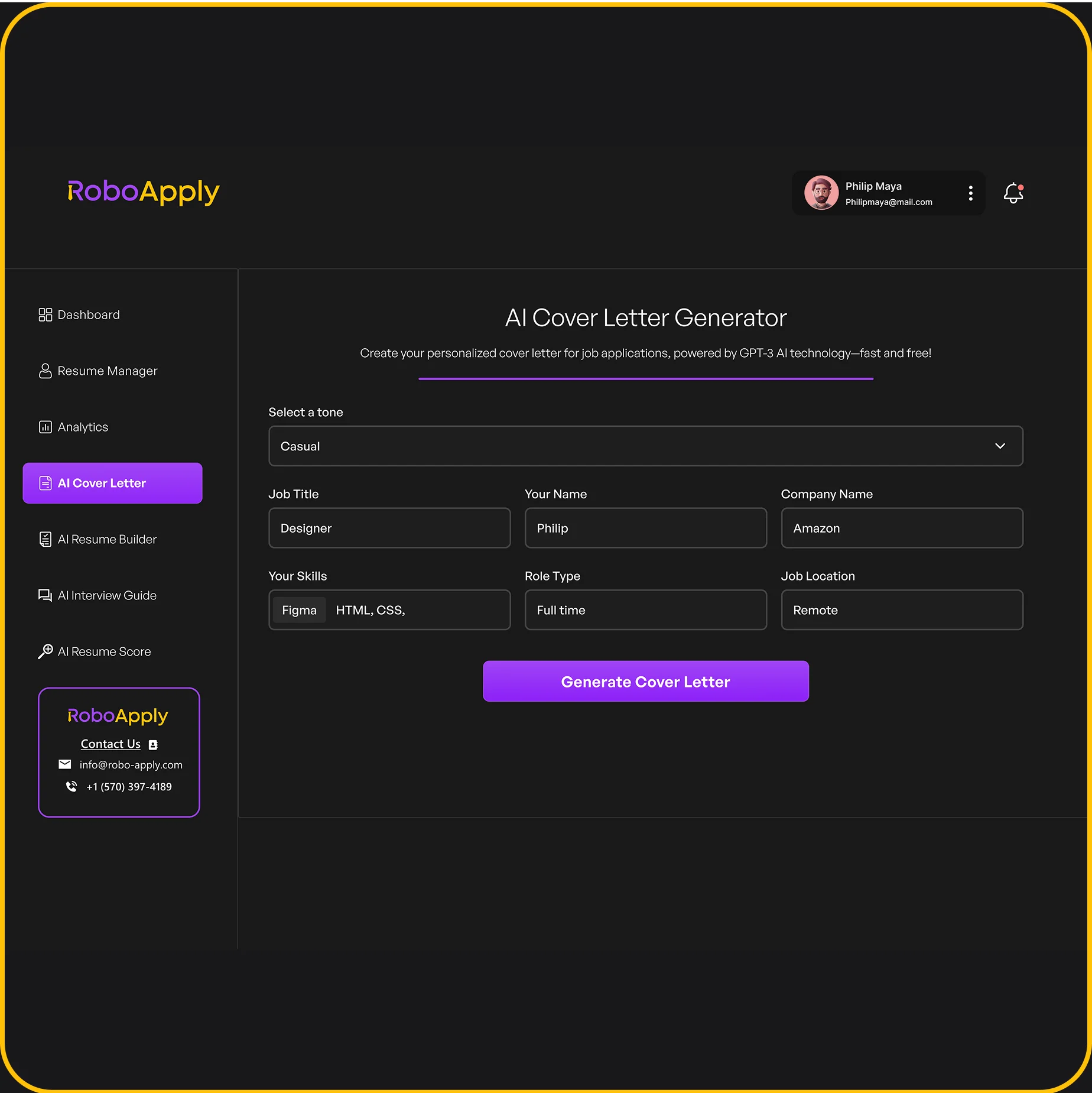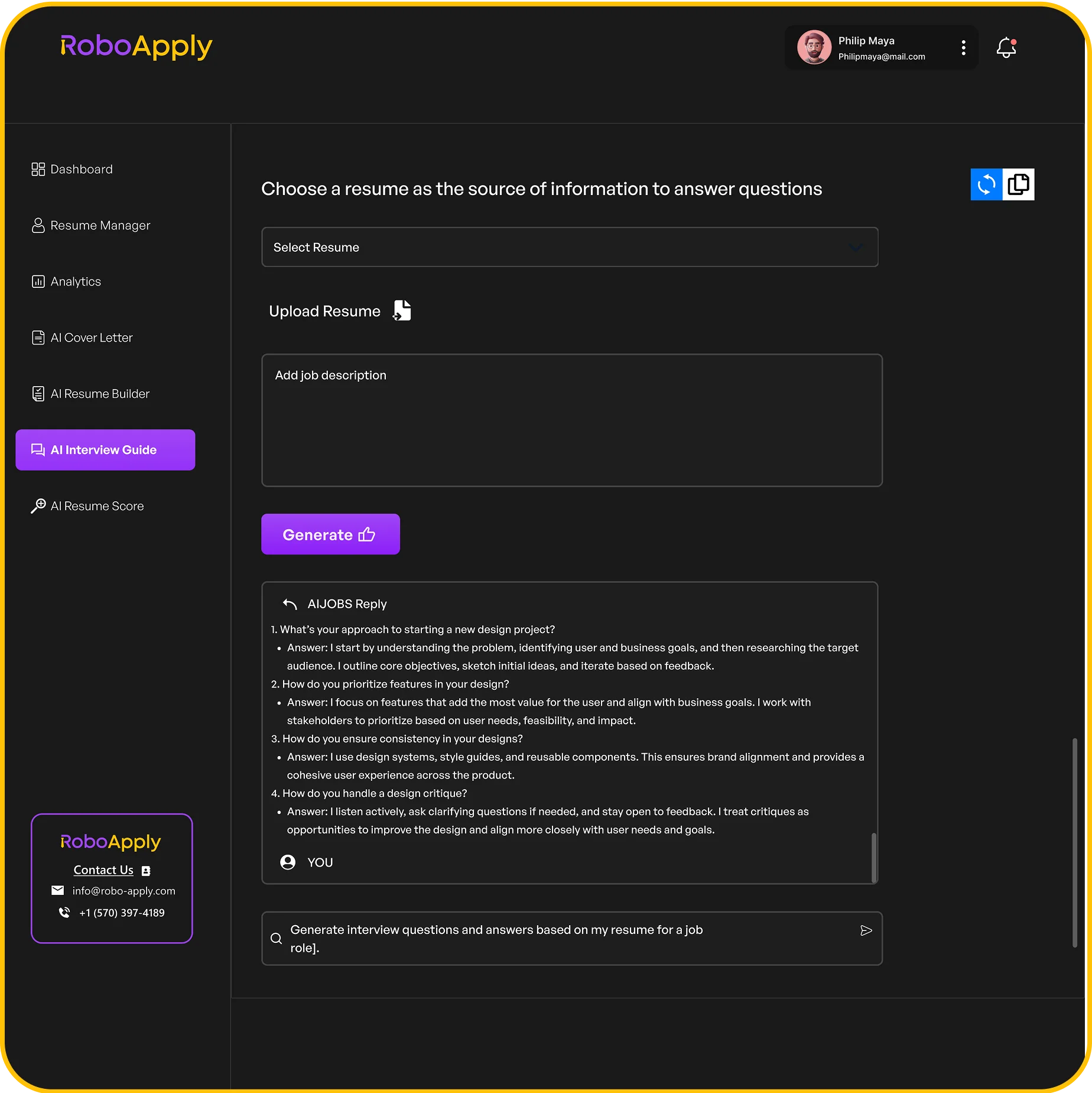1. Entry-Level Mechanical Engineer
An entry-level mechanical engineer resume needs to showcase your potential. It’s about highlighting what you can do, even without extensive professional experience. Think of it as a promise of future contributions.
Summary
A resume summary is a short section that highlights your most relevant skills and experiences. It’s optional, but it can be a great way to grab the hiring manager’s attention right away. For an entry-level role, focus on your technical skills, any internships, and notable projects. Keep it short and sweet – around 2-4 sentences is ideal. Tailor it to each job you’re applying for to show you’ve done your homework. For example, you might mention your proficiency in CAD software.
Experience
Even if you don’t have a ton of work experience, you can still make this section shine. Focus on internships, co-op experiences, and any relevant projects you worked on during your studies. Use action verbs to describe your responsibilities and accomplishments. Quantify your achievements whenever possible to give the hiring manager a clear picture of your impact. Think about including details about your experience with mechanical engineering.
Education
Your education section is super important as an entry-level candidate. List your degree, major, and any relevant coursework. If you have a high GPA, definitely include it. Also, mention any academic awards, scholarships, or honors you received. If you’ve passed the fundamentals of engineering exam, make sure to note that too. It shows employers you’re serious about your career. Don’t forget to check out how to list your education on your resume.
Skills
This section is where you showcase your technical and soft skills. For technical skills, think about CAD software, FEA software, programming languages, and knowledge of manufacturing processes. For soft skills, highlight things like problem-solving, teamwork, communication, and time management. Make sure to tailor your skills list to the specific job requirements. If the job description mentions a specific skill, be sure to include it if you have it.
Tips for Entry-Level Mechanical Engineer Resumes
- Pass the Fundamentals of Engineering (FE) Exam: This shows employers you’re ready for a mechanical engineering role.
- Use Your University’s Resources: Career centers can connect you with companies that hire grads from your school.
- Highlight Relevant Coursework: Mention specific courses that align with the job requirements.
- Showcase Projects: Include details about any engineering projects you’ve worked on, whether they were academic or personal.
Remember, your resume is your first impression. Make it count by highlighting your strengths and tailoring it to each job you apply for. Good luck!
2. Junior Mechanical Engineer
So, you’re aiming for a junior mechanical engineer role? Awesome! This is often the next step up from an entry-level position, and it’s where you start to really apply your knowledge and gain more hands-on experience. Let’s break down what makes a resume shine for this level.
To land a junior mechanical engineer position, you’ll typically need a bachelor’s degree in mechanical engineering. But, what really sets you apart is showing that you’ve got some practical experience. This could be from internships, co-ops, or even relevant projects you tackled during your studies. Hiring managers want to see that you can hit the ground running and contribute to the team.
Here’s what to focus on:
- Highlight relevant projects: Did you design a pumping system? Maybe you helped repair engine problems? Showcase these experiences. Even academic projects count if they demonstrate your skills.
- Emphasize your education: If you’re light on work experience, make your educational background shine. Mention any relevant coursework, research, or academic achievements.
- Showcase process optimization skills: Mechanical engineers often need to optimize processes to improve efficiency and reduce costs. If you’ve got experience in this area, make sure to highlight it. It shows you can bring valuable experience to the table.
A strong resume for a junior mechanical engineer will demonstrate both your technical skills and your ability to learn and grow. It’s about showing potential employers that you’re ready to take on more responsibility and contribute to their team.
Here are some skills you might want to include on your resume:
- Microsoft Project
- Manufacturing
- Project Engineering
- Microsoft Access
- Arduino
- MATLAB
- Siemens NX
- Creo Parametric
- CATIA
- Lean Manufacturing
Remember to tailor your resume to each specific job application. Highlight the skills and experiences that are most relevant to the position. Good luck with your job search! You can also find resume templates online to help you get started.
3. Mechanical Design Engineer
Mechanical design engineers are the masterminds behind the blueprints that bring machines to life. They’re not just about building; they’re about creating efficient, safe, and functional designs. Let’s look at what makes a resume shine in this field.
Showcase Your Design Expertise
Mechanical engineers often ensure a design’s feasibility and structural integrity, not just build parts. Highlight your design skills to show you understand design concepts and principles. Consider certifications like the Assistive Design Certificate to demonstrate this knowledge to hiring managers.
Highlight Relevant Software and Tools
Mechanical engineers rely on various software and tech. Common examples include AutoCAD, PTC Creo, and SOLIDWORKS. Make sure to highlight your knowledge of these tools. It shows you can jump right in. It’s like saying, "Hey, I already speak the language!"
Give Examples of Your Design Work
Since designs are visual, including a portfolio of your mechanical engineering designs and prototypes is a great idea. Let your work speak for itself. It’s one thing to say you’re good; it’s another to show it. Consider adding a mechanical design engineer resume example to your portfolio.
Skills Section Lists Technical Proficiencies
Mechanical design engineering is more specialized than general mechanical engineering. Since you’ll spend extra time with design software, show hiring managers you know programs like AutoCAD or CATIA. List these hard skills in a separate skills section for visibility. It makes it easy for them to see what you bring to the table. Here’s a list of skills you can include on your resume:
- CATIA
- Engineering
- Design
- Research and Development (R&D)
Use Strong Action Verbs
Start your achievement descriptions with strong action verbs to tell recruiters about your capabilities. Engineering-specific verbs like "prototyped," "designed," and "evaluated" are great choices. They highlight your industry expertise. It’s all about showing, not just telling. Make sure to tailor your resume to the job and write a targeted resume.
A well-crafted resume for a mechanical design engineer should clearly demonstrate both technical skills and design acumen. Quantify your achievements whenever possible to show the impact of your work. This helps you stand out from the crowd.
4. Senior Mechanical Engineer
As a Senior Mechanical Engineer, you’re expected to have a solid grasp of design, manufacturing, and testing of mechanical systems. Companies now value innovation and sustainable design. When you’re putting together your resume, make sure to highlight your technical skills, your creative thinking, and how well you adapt to new tech. Remember, you’re not entry-level anymore. Recruiters want to see leadership skills and proof that you can handle big, complicated projects on your senior mechanical engineer resume.
Senior mechanical engineers often oversee processes and work with both customers and internal teams. You might even be in charge of guiding junior engineers. To land this kind of role, you need to show you’re a skilled engineer and a good manager.
Here are some skills you might want to include:
- Mechanical Engineering
- Creo Parametric
- ANSYS
- Manufacturing
- Technical Drawing
- Geometric Dimensioning & Tolerancing
- Engineering Design
5. Experienced Mechanical Engineer
So, you’ve been in the trenches for a while? An experienced mechanical engineer resume needs to show that you’re not just good on paper, but you’ve got the real-world experience to back it up. It’s about highlighting your accomplishments and demonstrating how you’ve made a difference in your previous roles. Let’s get into it.
Experience That Matters
When you’re listing your experience, don’t just throw in job titles and dates. Quantify your achievements whenever possible. Numbers speak louder than words. Did you improve efficiency? By how much? Did you reduce costs? How much did you save the company? Use metrics to showcase your impact. For example:
- Led a cost-reduction initiative that optimized material selection, saving the company $50,000 annually.
- Improved machine cycle time efficiency by 12% through kinematic analysis and CAD modeling.
- Designed and implemented a modular conveyor system that reduced assembly line downtime by 15%, utilizing SolidWorks for design optimization and simulation.
It’s not enough to say you "worked on projects." You need to show what you accomplished and how your contributions benefited the company. Think about the challenges you faced, the solutions you implemented, and the results you achieved.
Certifications and Licenses
If you’ve got a PE license, flaunt it! It shows you’re serious about your career and have the credentials to back it up. Also, any other certifications you’ve earned can set you apart. It shows you’re committed to staying up-to-date with the latest industry trends and technologies. Obtaining your PE license is a fundamental step to take if you are an engineer looking to obtain a more senior role.
Skills Showcase
Your skills section should be a mix of technical and soft skills. Technical skills are a must, but don’t forget to highlight your problem-solving, communication, and leadership abilities. Here are some skills you can include on your experienced mechanical engineer resume:
- LabVIEW
- Engineering
- MATLAB
- ANSYS
- Project Engineering
- Microsoft Project
- Lean Manufacturing
- Mechanical Engineering
- 5S
Tailor It
Always tailor your resume to the specific job you’re applying for. Read the job description carefully and identify the key skills and qualifications they’re looking for. Then, make sure your resume highlights those skills and experiences. It shows you’ve taken the time to understand their needs and that you’re a good fit for the role. Consider how to highlight technical skills in your resume to make it stand out.
6. Summary
Your resume summary is your chance to make a strong first impression. It’s a brief overview of your skills, experience, and career goals, tailored to the specific mechanical engineering role you’re applying for. Think of it as your elevator pitch – a concise statement that grabs the reader’s attention and convinces them to keep reading.
A well-crafted summary can significantly increase your chances of landing an interview. It shows employers that you understand their needs and have the qualifications to meet them. Let’s look at how to write a summary that stands out.
- Highlight your most relevant skills and experience.
- Tailor your summary to each specific job application.
- Quantify your achievements whenever possible.
A strong summary should immediately tell the recruiter why you are a good fit for the position. It should be clear, concise, and focused on the employer’s needs.
To make your summary even better, consider these points:
- Focus on the job requirements: Carefully review the job description and identify the key skills and qualifications the employer is seeking. Then, make sure your summary highlights those specific areas.
- Quantify your achievements: Use numbers and data to demonstrate the impact you’ve made in previous roles. For example, instead of saying "Improved efficiency," say "Improved efficiency by 15%."
- Showcase your passion: Let your enthusiasm for mechanical engineering shine through in your summary. This can help you stand out from other candidates who may have similar qualifications.
Crafting a compelling summary is a key step in creating an effective entry-level mechanical engineering resume.
7. Experience
Your experience section is where you really show what you’ve done. It’s the heart of your resume, especially for mechanical engineers. This is where you prove you’re not just book-smart, but also can apply your knowledge in the real world. Let’s get into how to make this section shine.
Focus on Relevance
Hiring managers care most about experience that directly relates to the job you want. So, put your most relevant mechanical engineering positions front and center. Tailor this section to match the job description. If a job emphasizes design, highlight your design experience. If it’s about manufacturing, focus on those projects.
For each job, aim for 2-4 bullet points. These aren’t just descriptions; they’re mini-stories of your accomplishments. Use action verbs and quantify your results whenever possible. Numbers speak louder than words. For example, instead of saying "Improved efficiency," say "Improved efficiency by 15% through process optimization."
Reverse Chronological Order
List your jobs in reverse chronological order. This means your most recent job goes first, and then you work your way back. This makes it easy for recruiters to see your career progression. It also highlights your most up-to-date skills and experiences. If you have gaps in your employment history, be prepared to address them, but don’t necessarily highlight them in your resume.
Quantify Your Achievements
Numbers are your friend. Whenever possible, quantify your achievements. Did you reduce costs? By how much? Did you improve efficiency? By what percentage? Did you design a component? What were its specifications?
Here’s why this matters: numbers provide concrete evidence of your impact. They make your accomplishments tangible and believable. Instead of saying you "improved a process," say you "reduced manufacturing time by 20% by implementing a new automated process." That’s much more compelling. If you’re looking for industrial engineer resume examples, remember to quantify your achievements.
Example Experience Entries
Let’s look at a couple of examples to see this in action:
Example 1: Mechanical Design Engineer Intern at Tesla
- Designed and optimized mechanical components for automotive production, improving vehicle performance by 20%.
- Applied AutoCAD in designing and drafting mechanical components, reducing design time by 10%.
- Performed aerodynamic simulations, optimizing car fuel efficiency by 15%.
Example 2: Mechanical Engineering Research Assistant at General Electric
- Developed a novel thermal management system using advanced simulation techniques, resulting in a 15% increase in energy efficiency for prototype models.
- Collaborated with a multidisciplinary team to design a small-scale wind turbine using mechanical design engineer resume principles.
Action Verbs to Use
Use strong action verbs to start each bullet point. This makes your descriptions more dynamic and engaging. Here are a few examples:
- Designed
- Developed
- Implemented
- Optimized
- Managed
- Collaborated
- Analyzed
- Simulated
- Tested
- Improved
Remember, your experience section is your chance to shine. Make it relevant, quantifiable, and easy to read. Use strong action verbs and focus on your accomplishments. This will help you stand out from the competition and land more interviews.
Tailor to the Job Description
This is so important it deserves its own section. Read the job description carefully. What skills and experiences are they looking for? Make sure your experience section highlights those specific qualifications. Don’t just send out a generic resume. Customize it for each job you apply for. This shows the hiring manager that you’ve taken the time to understand their needs and that you’re a good fit for the role. You can even use tools like RoboApply to help you customize your cover letters and auto-apply to jobs.
8. Education
Your education section is super important, especially when you’re just starting out. It shows employers you’ve got the theoretical knowledge to back up your skills. Let’s break down how to make it shine.
What to Include
When you’re listing your education, make sure to include these details:
- Name of the University/College: Be clear and accurate.
- Location: City and state.
- Degree: Specify the full degree name (e.g., Bachelor of Science in Mechanical Engineering).
- Major/Specialization: Mention any specific areas you focused on.
- Graduation Date (or Expected Graduation Date): Use month and year.
- GPA (Optional): Include if it’s above 3.5.
Example
Here’s how you might format your education section:
University of Example, Exampleville, CA
Bachelor of Science in Mechanical Engineering
Major: Robotics, Minor: Computer Science
Graduation Date: May 2025
GPA: 3.8/4.0
Tips for a Strong Education Section
- Order Matters: List your education in reverse chronological order (most recent first).
- Highlight Relevant Coursework: If you have limited experience, mention relevant courses that align with the job description. For example, "Relevant Coursework: Thermodynamics, Fluid Mechanics, Machine Design."
- Don’t Overdo It: Keep it concise and easy to read. Avoid unnecessary details.
Your education section is a chance to show employers you’re prepared for the job. Make sure it’s clear, accurate, and highlights your strengths.
GPA Considerations
Whether or not to include your GPA is a common question. Here’s a quick guide:
- Include if: It’s above 3.5. It’s required by the employer.
- Consider omitting if: It’s below 3.0. You have significant work experience that outweighs your GPA.
Highlighting Projects and Achievements
If you worked on any significant projects during your studies, briefly mention them in your education section. This is especially useful if you lack professional experience. For example:
University of Example, Exampleville, CA
Bachelor of Science in Mechanical Engineering
Graduation Date: May 2025
* Senior Design Project: Designed and built a solar-powered water purification system.
Remember to tailor your engineering intern resume examples to each specific job application. A well-crafted education section can significantly boost your chances of landing an interview. Also, remember to tailor your cover letter to the specific role and company.
9. Skills
When it comes to landing that entry-level mechanical engineer job, your skills section is super important. It’s where you show off what you can actually do. Recruiters want to see a mix of technical abilities and soft skills that prove you’re ready to contribute. Let’s break down what to include.
Technical Skills
These are the hard skills specific to mechanical engineering. Listing the right ones can really make your resume stand out. Think about the tools and techniques you’ve learned in school or through internships. Here are some examples:
- CAD Software: SolidWorks, AutoCAD, CATIA, Autodesk Inventor. Being proficient in these is a must.
- Simulation & Analysis: ANSYS, MATLAB, Simulink. These show you can analyze and optimize designs.
- Manufacturing Processes: CNC Machining, 3D Printing, Injection Molding. Knowing how things are made is a big plus.
- Engineering Principles: Thermodynamics, Fluid Dynamics, Finite Element Analysis. These are the core concepts you need to understand.
Soft Skills
Don’t underestimate these! Soft skills show how you work with others and solve problems. They’re just as important as your technical skills. Here are some to consider:
- Problem-Solving: Can you figure out complex issues and come up with solutions?
- Communication: Can you clearly explain technical concepts to others?
- Teamwork: Are you able to collaborate effectively with colleagues? Collaboration is key in most engineering roles.
- Time Management: Can you handle multiple projects and meet deadlines?
How to List Your Skills
Okay, so you know what skills to include, but how should you list them? Here’s a simple approach:
- Create a dedicated "Skills" section: Make it easy to find on your resume.
- Use bullet points: This makes your skills easy to scan.
- Group similar skills: For example, put all your CAD software together.
- Be specific: Instead of just saying "CAD," list the specific programs you know.
- Tailor to the job: Read the job description carefully and highlight the skills they’re looking for. If the job emphasizes strong problem-solving abilities, make sure that’s prominent on your resume.
Remember, your skills section is a snapshot of your abilities. Make it clear, concise, and relevant to the job you want. Good luck!
10. Tips for Mechanical Engineer Resumes
Crafting a standout mechanical engineer resume requires more than just listing your qualifications. It’s about strategically presenting your skills and experience to catch the eye of hiring managers. Here are some tips to help you create a resume that gets results.
Highlight Relevant Skills
Make sure to showcase the technical skills that are most relevant to the job you’re applying for. Don’t just list generic skills like "communication" or "Microsoft Office." Instead, focus on specific mechanical engineering skills.
- CAD software (AutoCAD, SolidWorks, etc.)
- FEA (Finite Element Analysis)
- GD&T (Geometric Dimensioning and Tolerancing)
- Manufacturing processes (CNC machining, injection molding, etc.)
Quantify Your Achievements
Don’t just describe your responsibilities; show the impact of your work using numbers. For example, instead of saying "Improved efficiency," say "Improved efficiency by 15% through process optimization."
Use Strong Action Verbs
Start your bullet points with strong action verbs that highlight your accomplishments. Engineering-specific action verbs like "designed," "prototyped," and "evaluated" are great choices. These verbs immediately tell recruiters about your capabilities. For example, instead of "Responsible for designing a new component," try "Designed a new component that reduced manufacturing costs by 10%."
Tailor Your Resume to Each Job
Customize your resume for each job you apply for. Carefully review the job description and identify the key skills and qualifications the employer is seeking. Then, make sure your resume highlights those skills and qualifications. This shows the employer that you’re a good fit for the job. You can also use resume examples to help you tailor your resume.
Proofread Carefully
Typos and grammatical errors can make a bad impression. Before submitting your resume, proofread it carefully. It’s also a good idea to have someone else review your resume for you. A fresh pair of eyes can often catch errors that you might miss. Consider using tools like RoboApply to help with this process.
A well-crafted resume is your first step to landing your dream job. Take the time to create a resume that accurately reflects your skills and experience, and you’ll be well on your way to a successful career in mechanical engineering.
Showcase Projects and Portfolio
If you have any personal projects or a portfolio, include them on your resume. This is a great way to demonstrate your skills and experience, especially if you’re an entry-level candidate. Projects can include anything from designing a 3D-printed object to building a robot. Make sure to include a brief description of each project and highlight your contributions.
Format for Readability
Use a clean and professional format that is easy to read. Use clear headings and bullet points to organize your information. Choose a font that is easy to read, such as Arial or Times New Roman. Avoid using too many colors or graphics, as this can make your resume look cluttered and unprofessional. A well-formatted resume shows that you pay attention to detail.
Keep it Concise
Aim for a one-page resume, especially if you have less than 10 years of experience. Hiring managers often spend only a few seconds reviewing each resume, so it’s important to make sure your resume is concise and easy to scan. Focus on the most relevant information and avoid including unnecessary details. If you have more than 10 years of experience, you can use a two-page resume, but make sure every piece of information is relevant and adds value.
Include a Summary or Objective
A brief summary or objective statement at the top of your resume can help grab the reader’s attention and highlight your key qualifications. A summary is a brief overview of your skills and experience, while an objective is a statement of your career goals. Choose the option that best suits your needs and experience level. For entry-level candidates, an objective statement might be more appropriate, while experienced candidates might prefer a summary.
Leverage Keywords
Use keywords from the job description throughout your resume. Many companies use applicant tracking systems (ATS) to screen resumes, and these systems often rely on keywords to identify qualified candidates. By including relevant keywords, you can increase your chances of getting your resume past the ATS and into the hands of a human recruiter.
Want to make your resume stand out for mechanical engineering jobs? It’s super important to get it just right. We’ve got some easy tips to help you make a great resume that gets noticed. Check out our website to learn how to make your resume shine and land that dream job!
Wrapping Things Up
So, there you have it. Getting your first mechanical engineering job means showing what you can do. Focus on your projects, internships, and the skills you picked up in school. Make sure your resume is clear and easy to read. It’s not just about listing things; it’s about telling a story of what you’ve learned and how you can help. Keep it simple, be direct, and show them you’re ready to start. Good luck out there!
Frequently Asked Questions
What should I put on my first mechanical engineering resume?
For your first mechanical engineering resume, make sure to show off any hands-on projects, internships, or schoolwork that relates to engineering. Talk about the tools and software you know how to use, like CAD programs. Also, don’t forget to mention any groups you were part of or awards you won that show you’re good at engineering.
What do companies look for in new mechanical engineers?
When you’re just starting out, employers want to see that you can learn and grow. They look for folks who are good at solving problems, can think critically, and work well in a team. Knowing how to use design software and understanding basic engineering ideas are also super important.
How can I make my entry-level mechanical engineering resume special?
You can make your resume stand out by adding a short summary at the top that highlights your best skills and experiences. Also, use strong action words to describe what you did in your projects and internships. Show how your work made a difference, even if it was just a school project.
How long should a new mechanical engineer’s resume be?
It’s a good idea to keep your resume to one page if you’re just starting your career. As you get more experience, you might need two pages, but for entry-level, one page is usually enough to share all the important stuff.
Should I include school projects on my resume?
Definitely include a section for your projects. This is where you can really show off what you’ve learned and built. Describe what you did, what tools you used, and what the outcome was. This helps employers see your practical skills.
Do I need to change my resume for every job application?
Yes, you should always change your resume a bit for each job you apply for. Read the job description carefully and use some of the same words they use to describe the skills and experiences they want. This helps your resume get noticed by the right people.
Where can I find good examples of entry-level mechanical engineering resumes?
You can find good resume examples on websites like RoboApply, university career center sites, and even on professional networking sites. Looking at examples can give you ideas on how to set up your own resume and what kind of information to include.
What file type should I use for my mechanical engineering resume?
It’s a good idea to save your resume as a PDF file. This makes sure that your resume looks the same no matter who opens it or what computer they use. It keeps your formatting neat and professional.
